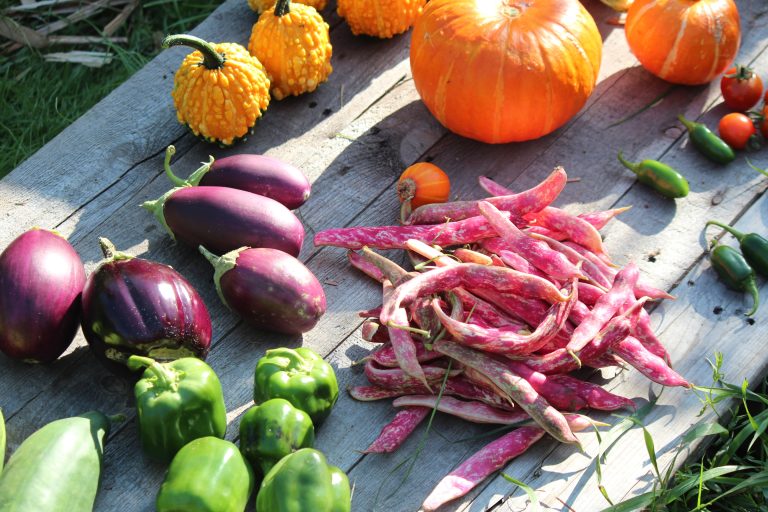Sowing the Seeds of Change: How Urban Farming is Transforming Agriculture
Urban farming has been gaining traction in cities around the world, and with it has come a revolution in the way we think about agriculture. This new phenomenon is transforming agriculture from the traditional model of rural farming to an innovative, sustainable approach to food production within cities. As more people become aware of the benefits of urban farming, such as access to locally grown produce, increased environmental sustainability, and enhanced local economic growth, the trend is sure to continue. By sowing the seeds of change, urban farming is transforming agriculture as we know it. Urban farming is a revolutionary new trend that is transforming the way we think about agriculture. By growing crops and raising animals in urban settings, it is providing access to fresh, healthy food to those who may not have otherwise had access to it. Urban farming is also creating sustainable economic opportunities for communities, while reducing the environmental impact of traditional farming. In this blog post, we will explore how urban farming is sowing the seeds of change in the agricultural industry.

The History of Urban Farming
Have you ever wondered how urban farming became such a popular practice today? Well, let me take you back to its roots.
Urban farming has been around for centuries, dating back to ancient civilizations such as the Mayans and the Aztecs who created floating gardens on lakes. In the early 1900s, urban agriculture was promoted as a way to increase access to fresh produce during times of war and economic hardship.
During World War I and II, Victory Gardens became a common practice where families were encouraged to grow their own produce to support the war effort and reduce reliance on commercial agriculture. Fast forward to the 1970s, where urban farming and sustainable agriculture became a focus during the environmental movement.
With the rise of cities, space became a limiting factor for farming, and new techniques such as rooftop gardening, community gardens, and permaculture emerged. Composting, a method of converting organic waste into soil, also became popular for urban farming due to limited space and the desire for sustainable farming practices.
As the farm-to-table movement grew in popularity, people began to question the origins of their food and the impact it has on the environment. Urban agriculture and organic farming became a way to provide locally grown, fresh produce while reducing the carbon footprint.
Today, urban farming has continued to grow, with many cities promoting community gardens and edible landscaping. It not only provides fresh produce but also creates a sense of community and connection to nature in urban environments.
Overall, the history of urban farming has been a long journey, but it has come a long way in promoting sustainable farming practices and increasing access to fresh produce in urban areas.
Benefits of Urban Farming
Urban farming has grown in popularity over the years, and it’s no surprise why. With an increase in population and a decrease in available land for farming, urban gardening has become an alternative solution to help provide fresh produce for local communities. But the benefits of urban farming go far beyond just access to fresh fruits and vegetables.
Here are just a few benefits of urban farming that are worth noting:
- Access to fresh and healthy food: With the ability to grow produce locally, urban farming can provide communities with access to fresh fruits and vegetables that are free from pesticides and other harmful chemicals. This not only promotes better health but can also save money on grocery bills.
- Promotes sustainability: Urban farming is a sustainable practice that reduces the need for long-distance transportation of produce, which helps to reduce greenhouse gas emissions. This can have a positive impact on the environment and help to create more resilient communities.
- Builds community: Urban farming can help to create a sense of community as it brings people together to work towards a common goal. It provides an opportunity for individuals to learn new skills, make new friends and support one another in their efforts to grow and maintain healthy food sources.
- Beautifies neighborhoods: Urban farming has the ability to transform unused or neglected spaces into beautiful and productive gardens, which can help to improve the aesthetic appeal of a neighborhood.
- Encourages outdoor activity: Urban farming encourages individuals to spend time outdoors, which has been shown to have numerous benefits for mental and physical health. It can also provide an opportunity for individuals to engage in light physical activity such as gardening, which can be a great form of exercise.
Overall, the benefits of urban farming go beyond just providing access to fresh produce. It promotes sustainability, builds community, beautifies neighborhoods and encourages outdoor activity. By investing in urban farming, we can help to create more vibrant and healthy communities that are better equipped to face the challenges of the future.

Challenges of Urban Farming
As with any type of agriculture, urban farming is not without its challenges. One major challenge is the lack of space. In cities, land is at a premium and finding a suitable location for a farm can be difficult. Many urban farmers have turned to creative solutions like rooftop gardens, hydroponics, and vertical farming to maximize the use of space.
Another challenge is the quality of soil in urban areas. Often, the soil is contaminated with pollutants like heavy metals or chemicals from years of industrial use. Urban farmers must carefully test their soil and take measures to remediate it if necessary.
Urban farming can also face legal challenges. Zoning laws may restrict or prohibit the use of land for agricultural purposes, or regulations may be confusing or contradictory. Urban farmers may need to work with local officials to navigate the legal landscape.
Finally, urban farmers may face economic challenges. With smaller plots of land, it can be difficult to produce crops in large enough quantities to make a profit. In addition, urban farmers may struggle to compete with larger, traditional agricultural operations.
Despite these challenges, urban farming is becoming increasingly popular as a way to bring fresh, healthy food to cities. With innovative solutions and perseverance, urban farmers are finding ways to overcome these challenges and make their farms thrive. As more people become interested in local, sustainable food systems, urban farming will continue to be an important part of the agricultural landscape. Urban farming also faces challenges in terms of access to resources like water and energy. Many urban farms rely on municipal water supplies, which can be expensive or limited in availability. In response, some urban farmers have developed innovative solutions like rainwater harvesting systems or aquaponics, which use less water than traditional farming methods.
Innovations in Urban Farming Techniques
As the popularity of urban farming continues to grow, so do the innovative techniques that make it possible to grow crops in small spaces. From vertical farming to aquaponics, the possibilities are endless.
One interesting innovation is the use of hydroponics, a method of growing plants without soil. Instead, plants are grown in nutrient-rich water, allowing them to absorb nutrients faster and grow quicker than traditional methods. This technique is especially useful in urban areas where space is limited and soil quality may not be ideal.
Another innovation is the use of vertical farming, where crops are grown in stacked layers instead of traditional flat beds. This method not only saves space, but also allows for more control over factors such as temperature and lighting. Some vertical farms even use LED lights to simulate sunlight, allowing for year-round growth.
Aquaponics is also gaining popularity in urban farming. This method combines aquaculture (raising fish) with hydroponics. The fish waste provides nutrients for the plants, while the plants filter the water for the fish. This closed-loop system allows for efficient use of resources and sustainable farming practices.
In addition to these methods, urban farmers are also turning to technology to monitor and optimize crop growth. Sensors and data analysis are being used to track plant growth, adjust temperature and humidity levels, and even predict crop yields.
Overall, these innovations are making it easier for urban farmers to grow crops in small spaces, and with more control and efficiency than ever before. It’s exciting to see how these techniques will continue to evolve and improve in the years to come.

The Future of Urban Farming
As urban farming continues to grow in popularity and importance, the future of agriculture is set to look very different from what we know today. With advances in technology and a growing interest in sustainable practices, urban farming is poised to revolutionize the way we think about where our food comes from.
One exciting trend in urban farming is the development of vertical farms, which allow for efficient use of space and resources in urban areas. These high-tech farms use hydroponic systems and artificial lighting to grow crops indoors, allowing for year-round production and maximum yields. With vertical farms, it is possible to grow fresh produce in the heart of the city, reducing the environmental impact of transportation and increasing access to healthy food for urban dwellers.
Another innovation in urban farming is the use of drones for precision farming. By collecting data on crop health and soil quality, farmers can use drones to target specific areas that need attention, reducing the need for chemical inputs and improving yields. With drones, urban farmers can also monitor crops from a distance, making it easier to manage large operations and identify potential issues before they become major problems.
In addition to technological advances, the future of urban farming also relies on community engagement and education. By bringing farming into urban areas and making it accessible to everyone, we can promote a more sustainable and equitable food system. Community gardens and urban farms can be used to teach people about where their food comes from and how to grow their own produce, fostering a deeper connection to the food they eat and the environment around them.
Overall, the future of urban farming looks bright. By embracing new technologies and promoting community engagement, we can create a more sustainable and equitable food system that benefits us all. Whether you live in a city or a rural area, the lessons of urban farming can be applied to create a healthier, more sustainable world. So why not join the movement and sow the seeds of change today?
Conclusion
In conclusion, urban farming has proven to be a revolutionary development in agriculture. It has transformed the way we produce and consume food in cities. Urban farming provides fresh and locally sourced produce that is sustainable and healthy for the urban community. Despite the challenges that urban farming faces, such as lack of space and funding, there have been numerous innovations in urban farming techniques that have increased productivity and efficiency. The future of urban farming looks promising as it is becoming a viable option for feeding our growing cities sustainably.
As we continue to move towards a more sustainable future, it is important that we support urban farming initiatives and explore new and innovative techniques. Whether you want to start your own urban farm or simply learn more about this exciting field, there are plenty of resources available. We encourage you to explore further and get involved in this important movement.
If you have any questions or comments about urban farming, we’d love to hear from you. Leave a comment below or check out our website for more articles on sustainable living.






